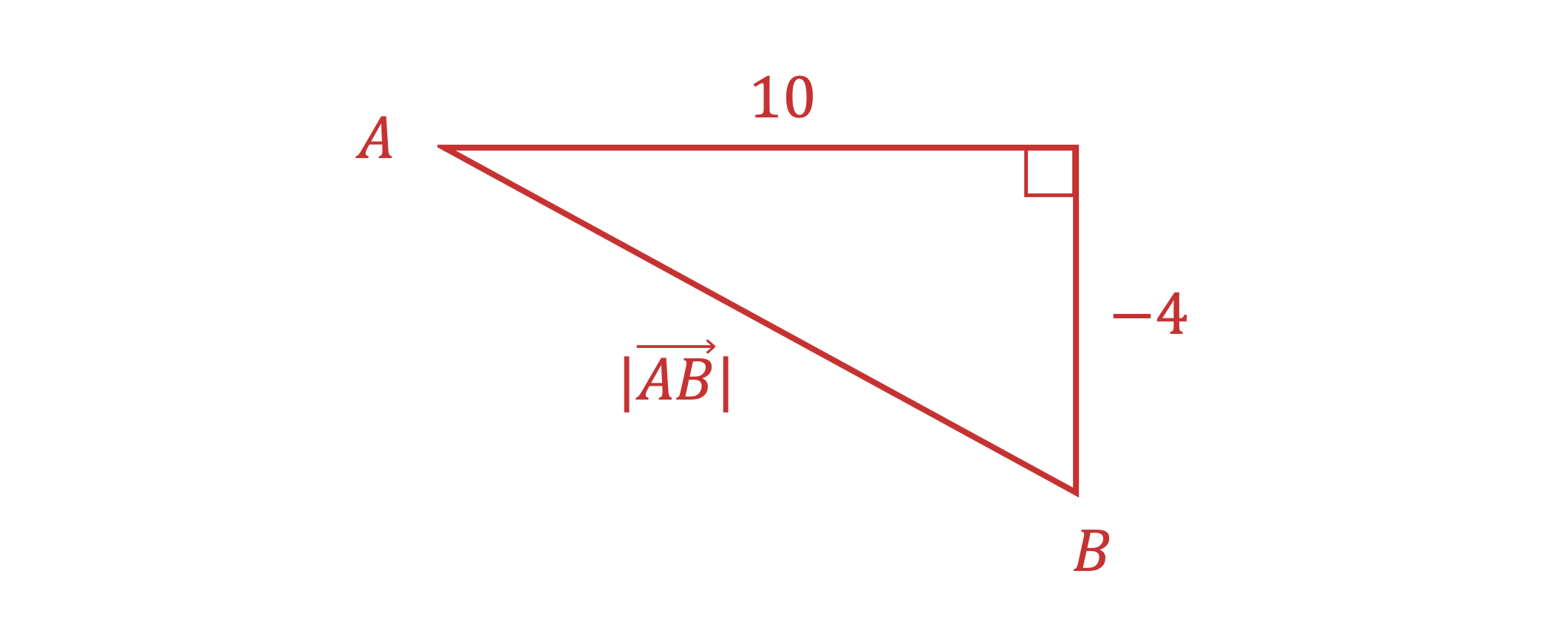Magnitude of a Vector (Cambridge (CIE) IGCSE Maths) : Revision Note
Did this video help you?
Magnitude of a Vector
How do I find the magnitude of a vector?
The magnitude of a vector is its length (distance)
It is also called the modulus
This is always a positive value
The direction of the vector is irrelevant
The magnitude of
is written
The magnitude of a is written |a|
Depending on the use of the vector, the magnitude of a vector represents different quantities
For velocity, magnitude would be speed
For a force, magnitude would be the strength of the force (in Newtons)
In component form, the magnitude is the hypotenuse of a right-angled triangle
Use Pythagoras' theorem to find the magnitude
The magnitude of

Examiner Tips and Tricks
If there is no diagram, sketch one!
You can sketch a vector and use it to form a right-angled triangle
Worked Example
Consider two points and
.
(a) Write down the column vector .
Find the horizontal and vertical distances between the two points
Subtract the x and y components of A from B
(b) Find the modulus of vector .
Sketching a diagram of the vector can help

Apply Pythagoras' theorem to the x and y components of
(c) Briefly explain why .
The magnitude of a vector is it's 'size'
Direction of the vector is ignored
since both vectors have the same distance
Another vector, , has three times the magnitude of vector
.
(d) Write down a possible column vector for .
Being three times means the vector
is three times longer
One way to find a vector is to multiply each component of the vector by 3 or -3
Another possible answer is

You've read 0 of your 5 free revision notes this week
Sign up now. It’s free!
Did this page help you?

